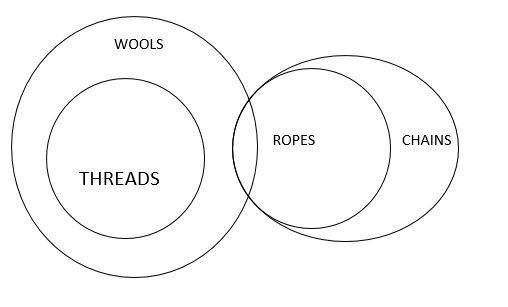Question
Statements: All threads are wools. Some
wools are ropes. All ropes are chains. Conclusions: I. Some wools are chains. II. Some ropes are chains. III. Some ropes are not chains. In each of the questions below are given three statements followed by three conclusions numbered I, II and III. You have to take the given statements to be true even if they seem to be at variance with commonly known facts. Read all the conclusions and then decide which of given conclusions logically follows from the given statements disregarding commonly known facts.Solution
Some wools are ropes(I) + All ropes are chains(A) ⇒ Some wools are chains(I). Hence conclusion I follows. All ropes are chains(A) ⇒I.I ⇒ Some ropes are chains(I). Hence conclusion II follows but conclusion III does not follow. ALTERNATE METHOD: 
How do you feel about taking risks?
How do you typically handle criticism or negative feedback?
How do you handle stress?
How do you feel about taking risks?
How important is it for you to have a sense of purpose or meaning in your life?
How likely are you to take on leadership roles or responsibilities in a group or organization?
How do you handle unexpected changes or surprises?
How do you handle failure?
How comfortable are you with taking on leadership roles?
How likely are you to challenge authority figures, even if it means facing consequences?
Relevant for Exams:


